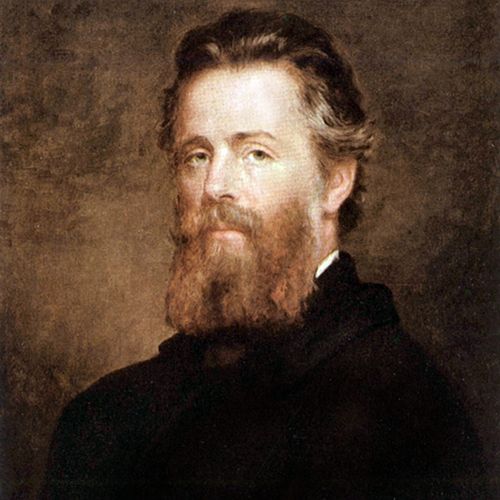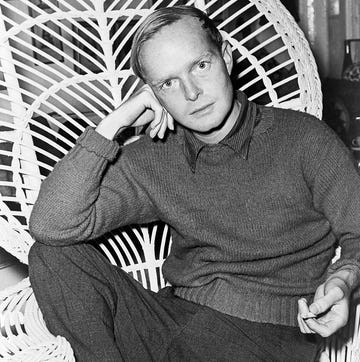(1819-1891)
Who Was Herman Melville?
Herman Melville was born in New York City in 1819. He worked as a crew member on several vessels beginning in 1839, his experiences spawning his successful early novels Typee (1846) and Omoo (1847). Subsequent books, including his masterpiece Moby-Dick (1851), sold poorly, and by the 1860s Melville had turned to poetry. Following his death in New York City in 1891, he posthumously came to be regarded as one of the great American writers.
Early Life
Melville was born in New York City on August 1, 1819, to Allan and Maria Gansevoort Melvill (Maria added the "e" to the family name following her husband's death). In the mid-1820s, young Melville fell ill to scarlet fever, and though he regained his health not long afterward, his vision was left permanently impaired by the illness.
The family had enjoyed a prosperous life for many years due to Allan's success as a high-end importer and merchant. However, he was also borrowing heavily to finance his business interests, and after he moved the family upstate to Albany in a failed attempt to branch into the fur trade in 1830, the family's fortune took a big hit. When Allan died suddenly in 1832, finances dwindled significantly.
Allan's oldest son, Gansevoort, took control of the family's fur and cap business in New York following his father's death, while Melville clerked at a bank to help make ends meet. During the 1830s, he was enrolled at Albany Academy and Albany Classical School, where he studied classic literature and began writing poems, essays and short stories. He left Albany in 1837 for a teaching job in Massachusetts, but found the work to be unfulfilling and soon returned to New York.
That year, Gansevoort's fur and cap business folded, putting the Melvilles back into a dire financial situation. The family relocated to Lansingburgh, New York, and Melville enrolled at Lansingburgh Academy to study surveying, hopeful of gaining employment with the newly initiated Erie Canal project.
Sea Voyages and Early Writing Success
Unable to gain a coveted job, Melville instead followed Gansevoort's suggestion to work as a crew member on a boat. In 1839, he signed on as a cabin boy for a merchant ship called the St. Lawrence, which traveled from New York City to Liverpool, England, and back.
In 1841, Melville embarked on his second sea voyage after being hired to work aboard the Acushnet, a whaling ship. His subsequent wild journey provided the sparks for his yet-to-be-realized literary career: After arriving at the Marquesas Islands of Polynesia in 1842, Melville and a crewmate deserted the ship and, soon after, were captured by local cannibals. Although Melville was treated well, he escaped after four months on board another whaling ship, the Lucy Ann, and was jailed after joining the crew in a mutiny. He eventually wound up in Hawaii before catching a ride back to Massachusetts on the USS United States, arriving home more than three years after he left.
Melville immediately set about putting pen to paper to capture his experiences. Typee: A Peep at Polynesian Life (1846), a combination of his personal tales and imagined events, drew attention for its detailed descriptions of seafaring life and a seemingly too-wild-to-believe plot. The author followed in 1847 with an equally successful sequel, Omoo: A Narrative of Adventures in the South Seas.
His career on the ascent, in 1847, Melville married Elizabeth Shaw, daughter of the chief justice of Massachusetts. They would go on to have four children.
'Moby-Dick' and Other Works
Melville continued with the sea-adventure theme for Mardi: and a Voyage Thither (1849), Redburn: His First Voyage (1849) and White-Jacket; or, The World in a Man-of-War (1850).
In 1851, the author delivered what would become his signature work, Moby-Dick (initially titled The Whale). Moby-Dick, categorized as American Romanticism, is based on both Melville's years of experience aboard whaleships and the real-life disaster of the Essex whaleship.
Traveling from Nantucket, Massachusetts, to South America, the Essex met its doom in the Pacific Ocean in November 1820, when a sperm whale attacked and destroyed the ship. The crew, adrift in their small whaleboats, faced storms, thirst, illness and starvation, and were even reduced to cannibalism for survival. However, succeeding in one of the great open-boat journeys of all time, the few survivors were picked up off South America. Their story, spread widely in America in the 19th century, provided inspiration for Melville's tale of a ship captain seeking revenge on an elusive whale.
While Moby-Dick eventually achieved immense critical acclaim, Melville didn't live to witness that success. In fact, the book didn't bring him any wealth or respect during his lifetime. Early critics were unimpressed by the novel; an 1851 article in the Illustrated London News called it "Herman Melville's last and best and most wildly imaginative story," and a testament to his "reckless imaginative power." The article went on to note Melville's "great aptitude for quaint and original philosophical speculation, degenerating, however, too often into rhapsody and purposeless extravagance."
Moby-Dick sold poorly, as did subsequent novels like Pierre; or, The Ambiguities (1852) and Israel Potter: His Fifty Years of Exile (1855). Following the release of The Confidence-Man: His Masquerade in 1857, Melville all but gave up on writing novels.
Later Years, Death and Legacy
Melville delivered a series of lectures throughout the late 1850s, and the following decade he began a 20-year career as a customs inspector in New York City. He also turned his creative interests to poetry during this period, publishing a collection called Battle-Pieces and Aspects of the War in 1866. In 1876, he published the epic Clarel: A Poem and Pilgrimage in the Holy Land, based on a previous trip to the region.
Melville had finally begun work on another novel when he died of a heart attack in New York City on September 28, 1891. His early fame had vanished by then, but many of his books were eventually reprinted, and his name began slowly gaining traction in the literary world. By the early 1920s, Melville had become a well-known figure among readers and critics alike; his last novel also saw the light of day, published in 1924 as Billy Budd, Sailor.
Today, Melville is regarded as one of America's greatest writers, his masterpiece Moby-Dick adapted for the big screen in 1956 and enduring as a staple of school reading lists. Interest in Melville and his works spiked again in 2015 with the release of the Ron Howard-directed In the Heart of the Sea, about the ill-fated voyage of the Essex.
QUICK FACTS
- Name: Herman Melville
- Birth Year: 1819
- Birth date: August 1, 1819
- Birth State: New York
- Birth City: New York
- Birth Country: United States
- Gender: Male
- Best Known For: Celebrated American author Herman Melville wrote 'Moby-Dick' and several other sea-adventure novels before turning to poetry later in his literary career.
- Industries
- Fiction and Poetry
- Astrological Sign: Leo
- Schools
- Grammar School of Columbia College
- Lansingburgh Academy
- Albany Classical School
- New York Male High School
- Albany Academy
- Death Year: 1891
- Death date: September 28, 1891
- Death State: New York
- Death City: New York
- Death Country: United States
Fact Check
We strive for accuracy and fairness.If you see something that doesn't look right,contact us!
CITATION INFORMATION
- Article Title: Herman Melville Biography
- Author: Biography.com Editors
- Website Name: The Biography.com website
- Url: https://www.biography.com/authors-writers/herman-melville
- Access Date:
- Publisher: A&E; Television Networks
- Last Updated: April 6, 2021
- Original Published Date: April 2, 2014
QUOTES
- It is not down in any map; true places never are.
- It is better to fail in originality than to succeed in imitation.












